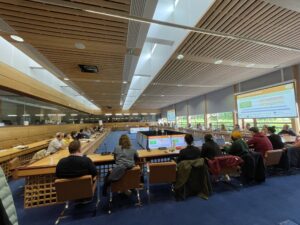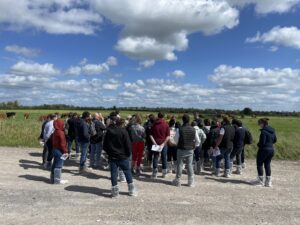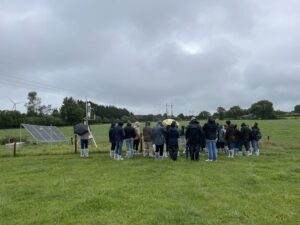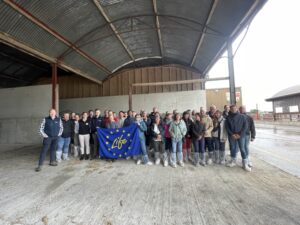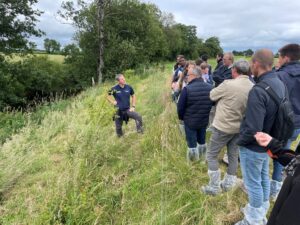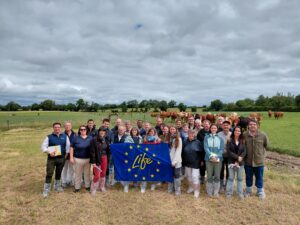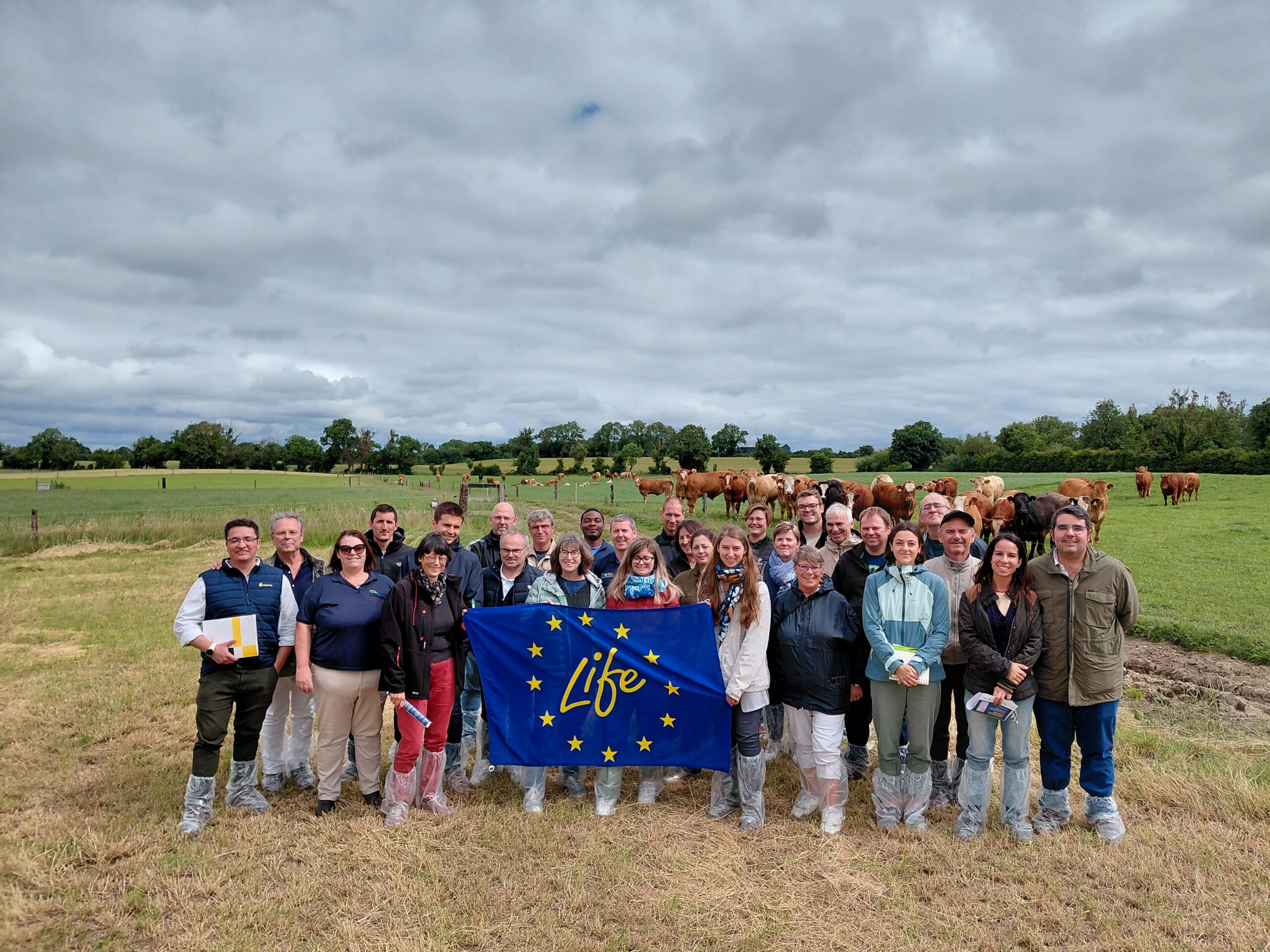On June 23, 24 and 26th, we held our third 3-day European meeting in Co. Meath, Ireland.
The 1st day took place in Grange, where the project partners and farmers were hosted by Teagasc and the European Commission. The morning was dedicated to a series of presentations:
- Paul Crosson (Head of Teagasc Grange) presented the objectives and mission of the institution.
- Emanuele Paolo Sicuro (European Commission) outlined ongoing work on the EU carbon certification framework, with a focus on integrating livestock-related emissions.
- Bernard Harris (Department of Agriculture, Food and the Marine) presented Ireland’s efforts to build a national framework for low-carbon farming
- Dale Crammond (Meat Industry Ireland) shared sustainability initiatives from the meat processing sector.
- Anaïs L’Hôte (Institut de l’élevage) introduced the LIFE Carbon Farming project and gave an update on its progress and early results.
- George Ramsbottom (Teagasc) and Niamh Bambrick (Bord Bia) presented the role of the Signpost Programme and Origin Green in supporting the rollout of carbon farming in Ireland, in connection with the Agnav carbon audit tool.
In the afternoon, participants visited the Teagasc Grange research facilities, with a focus on beef production systems. They toured experimental plots related to pasture and herd management.
Among the key findings observed on-site:
- Silage based on a ryegrass/clover mix results in 27 kg higher weight gain per animal compared to pure ryegrass silage.
- Steers can reach slaughter age at 20 months, compared to the Irish average of 26 months.
- Teagasc is leading several studies aimed at reducing enteric methane emissions, including:
· Use of green feed to measure emissions ;
· Feed additives based on algae or oils (e.g., linseed oil and rapeseed oil) ;
· Chemical inhibitors like Bovaer (36% reduction in emissions, with no impact on intake) ;
· Calcium peroxide (30% reduction, with promising adaptation to Irish systems).
The research must continue, but these initial findings are very encouraging.
The second day was about grassland management and carbon – right in the heart of Irish farming.
Participants started the day with a visit of the beef finishing farm of John Dunne in Tinnacrannagh, Co. Offaly – a participant in the Signpost Programme, Future Beef, and the LIFE Carbon Farming project.
This was a great opportunity for participants to understand a system where grass management is the cornerstone of production. One of the highlights was seeing the Eddy Covariance technique in action – providing continuous measurements of fluxes between the land and the atmosphere.
By monitoring changes in wind speed and gas concentrations (CO₂ and CH₄), this technique make it possible to gather information about:
– Plant carbon uptake
– Animal respiration
– Ecosystem respiration
– Methane release
Then, participants headed to Kepak’s large-scale beef farm in Caulstown, Co. Meath – a finishing production system with store to beef cattle.
Discussions with the farm team and participants focused on grass yield and animal performance.
this second day was another day full of valuable exchanges, which sparked reflection among the farmers and advisors present, and gave them deeper insight into Irish beef farming.
The final visit of the 3-day European meeting was at Michael McGuigan’s Blackwater Farm in Longwood, Co. Meath. This is a beef cattle farm participating in the LIFE Carbon Farming Project, as well as in the Future Beef and SignPost programmes. Purchased in 2016 as part of a career change, it’s not a family farm – a contrast with the majority of Irish farms.
Among the actions to reduce the farm’s carbon footprint:
– Lowering age at first calving
– Reducing slaughter age
– Improving genetics for better productivity
– Optimising grassland management
It is important to note that all of these actions also bring economic benefits – a win-win for sustainability and profitability.
During the visit, participants discussed various topics such as farm infrastructure and animal welfare ; breeding (Michael uses a mix of Simmental, Charolais, and Limousin genetics) ; financial support available to Irish farmers ; grasslands – with a special focus on clover, a key player in reducing GHG emissions in livestock systems- ; water resources (hedgerows are being planted along the riverbanks to protect water quality and support biodiversity).
In the afternoon, European partners gathered at Teagasc Grange to hold our project steering committee.
